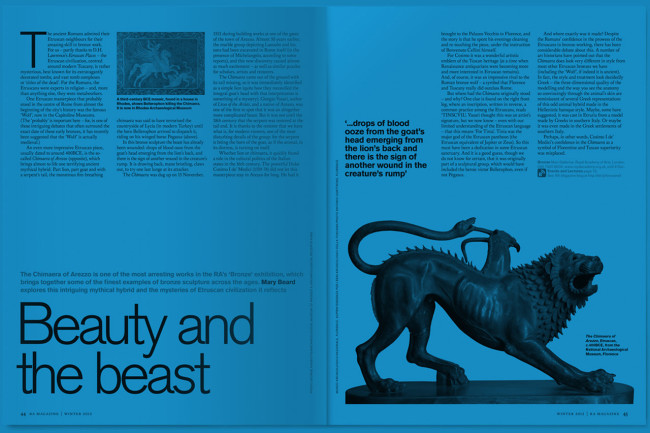Lives of the artists: self-portraits and their stories
Lives of the artists: self-portraits and their stories
By Christopher Baker
Published 14 December 2016
Artists have assumed many identities in paint, as a new exhibition at the Queen’s Gallery shows. Here are four self-portraits from the Royal Collection’s who’s who of great artists, and what they tell us about their makers.
-
From the Winter 2016 issue of RA Magazine, issued quarterly to Friends of the RA.
-
-

The Courtier
Portrait of the Artist
by Peter Paul Rubens, 1623A dashing portrait of a gentleman this certainly is, but there is no hint that the sitter is a painter. In the place of a professional man with palette and brushes we are presented with a courtier, superbly depicted with great verve and assurance – and that indeed is the point.
The work was commissioned by Lord Danvers and presented to Charles I when he was Prince of Wales, and it was intended as a display of virtuosity, conveying the impression intrinsically that Rubens could command unparalleled facility as a painter. This was especially important as he had earlier supplied the court with a depiction of a lion hunt, chiefly by members of his studio, which had been rejected as being scarcely “touched by his own hand”. The effort expended on the self-portrait proved well worth it. Royal commissions that followed for the Flemish master included the spectacular ceiling of the Banqueting Hall, and Rubens praised the King as “the greatest amateur of paintings among the princes of the world”.
-
-
-
The Autobiographer
Self-Portrait in a Flat Cap
by Rembrandt van Rijn, 1642Rembrandt was a remarkably candid artist whose many studies of his own face in oil, ink and etching comprise a life-long visual autobiography. Instruction, introspection and self-promotion often elide in these humane works, which form the most extensive series of self-portraits of the 17th century.
Here he presents himself with a degree of assurance and a touch of theatrical presentation. At the age of 36 in 1642, when this study was painted, the artist was working on The Night Watch, the grandest of his group portraits; it was a moment of worldly achievement before the bankruptcy and trials in his personal life that were to come. His clothes, twinkling earring and gold chains are rather fanciful props; the light draws attention to his face and inquisitive, benign eyes, and he appears fundamentally as a man worth knowing. The painting was purchased for the Royal Collection in 1814, and when first catalogued five years later it was described as painted in the artist’s “best manner”.

-
-
-

The Allegory
Self-Portrait as the Allegory of Painting (La Pittura)
by Artemisia Gentileschi, 1638-39Gentileschi chose here to not merely depict herself in the act of painting, but as an embodiment of the art itself. The composition was inspired by key sources for such emblematic imagery, including the work of the iconographer Cesare Ripa, who described Painting as “a beautiful woman, with full black hair”. But this is no dry exercise in symbolism: the lace and lush green, rippling silk of her dress, the golden chain around her neck and loaded palette in her hand enliven the image brilliantly. The intense concentration on the artist’s face would presumably have been required to achieve such effects.
Gentileschi’s decision proved an elegant advertisement of her skills and ingeniously distinguished her from her male contemporaries, as none of them could of course inhabit such a female personification. Her ability to create a dramatically lit and arresting composition against a dark Caravaggesque background resulted in one of the finest self-portraits of the 1630s.
-
-
-
The Animal
The Connoisseurs: Portrait of the Artist with Two Dogs
by Edwin Landseer RA, c. 1865The acidic views of critics can easily dent an artist’s confidence; here however, their opinions are lampooned in a witty and warm manner by Landseer, the greatest and most empathetic British animal painter of the 19th century.
This delightful image is related to a contemporary photograph of the artist at work, prints of which were sold to the public, much to his annoyance. For Landseer dogs were never merely domestic pets, but noble creatures who could convey qualities such as devotion or heroism. These romantic ideals were combined in his work with the brilliant rendering of anatomical and textural detail. The collie is probably Lassie, who was Landseer’s companion in his studio, and the other dog may be a retriever called Myrtle. Between them, the painter himself, with his severe stare and impressive sideburns, exudes something of a canine persona.

-
-
Portrait of the Artist, The Queen’s Gallery, Buckingham Palace, London, until 17 April 2017
-
-
Enjoyed this article?
Become a Friend to receive RA Magazine
As well as free entry to all of our exhibitions, Friends of the RA enjoy one of Britain’s most respected art magazines, delivered directly to your door. Why not join the club?

-








